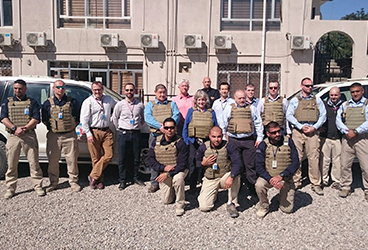Sep 2016

The debate about mobile team profile is always there. In Iraq since 2003 it has taken place across the whole breadth of those involved from government agencies, through commercial companies to the UN and NGOs.
In the early days it was easy for some to be uncertain as to whether they were some form of paramilitary organisation or not. There was often confusion about the role of the PSC and its escort teams, and it often took some time for people to come to terms with the fact that their role was to take clients to and from their place of activity safely, and in a state that allowed them to work effectively. The principle was to avoid contact, and if that did not work then to get out of trouble as quickly as possible.
For some it is a statement of the obvious to say that the best way of dealing with an attack is not to get attacked in the first place. The counter argument runs that you are likely to be attacked so make sure you are protected.
The principle behind the former low profile approach is to pass what is known as “the second glance test”. The idea being that if the identity of a vehicle was not clear, a potential attacker would have little time to make a positive identification and initiate his attack. If he was slow to make that identification, the target would have continued moving and be out of the high risk area before the attack could be initiated.
The high profile approach relies on a perceived ability to deter any kind of attack and an assumption that the vehicles carrying the client(s) are well protected. The question is then: do those vehicles provide real protection against possible forms of attack?. As ever in terrorist situations, the attacker’s methods have evolved from shooting to the more lethal IED. How much protection a B6 vehicle gives against an IED is a moot point. They are graded on their ability to withstand direct small arms fire, not the now more likely explosive method of attack.
The requirement by the Government of Iraq for PSC’s vehicles to be clearly badged has almost negated the whole argument. Mobile teams now have little choice but to be high profile. The question must remain as to whether this heightens the risk to those teams and those whom it is their duty to protect.